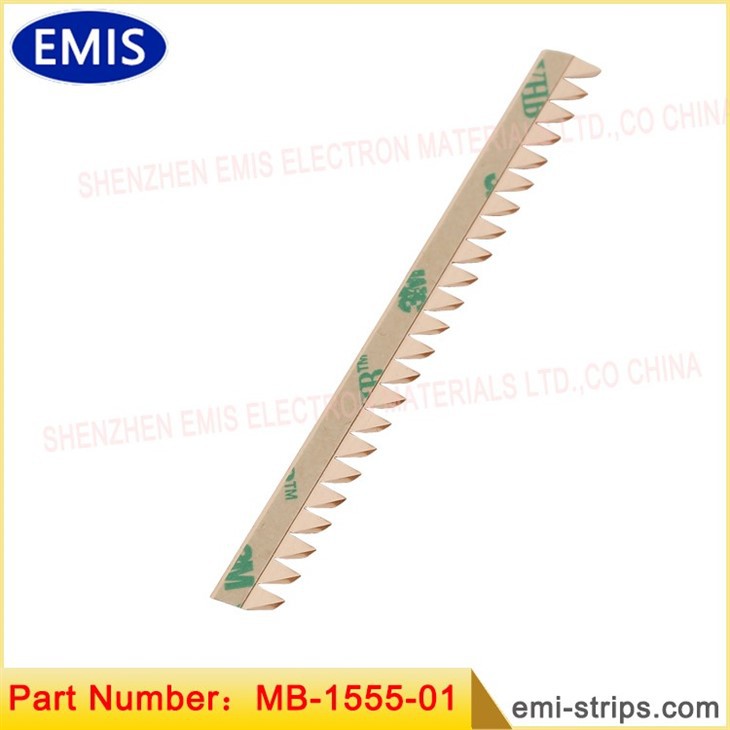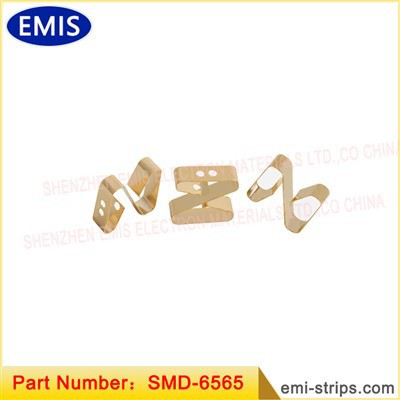Yo, what's up everyone! I'm a supplier of Standard EMI Strips, and today I wanna talk about a super important question: Are Standard EMI Strips compatible with different PCB materials?
First off, let's quickly go over what EMI Strips are. EMI, or Electromagnetic Interference, can mess up the normal operation of electronic devices. Standard EMI Strips are used to shield against this interference, making sure our electronic gadgets work as they should. They're like the bodyguards of the electronic world, protecting sensitive components from unwanted electromagnetic waves.
Now, let's dive into the compatibility with different PCB materials. PCBs, or Printed Circuit Boards, come in various types, each with its own set of properties.
FR - 4 PCBs
One of the most common PCB materials out there is FR - 4. It's a fiberglass - reinforced epoxy laminate. The great thing about FR - 4 is its wide availability and relatively low cost. When it comes to Standard EMI Strips, they usually play nice with FR - 4. The surface of FR - 4 is smooth and provides a good base for the EMI Strips to adhere to. The strips can be easily attached using adhesives or mechanical fasteners.
The electrical properties of FR - 4, like its dielectric constant, don't cause any major issues for the EMI Strips. The strips can effectively form a shield around the components on the FR - 4 PCB, blocking out unwanted electromagnetic signals. For example, if you're working on a consumer electronics device like a smartphone or a tablet, which often use FR - 4 PCBs, you can trust that Standard EMI Strips will do their job.
Metal - Core PCBs
Metal - Core PCBs are another type. These have a metal base, usually aluminum or copper, which helps with heat dissipation. The compatibility of Standard EMI Strips with metal - core PCBs is a bit more complex.


On one hand, the metal base can actually enhance the shielding effect. The EMI Strips can be connected to the metal core, creating a more comprehensive shield. However, there are some challenges. The metal surface might be prone to oxidation, which can affect the adhesion of the EMI Strips. You need to make sure to clean the metal surface properly before attaching the strips.
Also, the thermal expansion coefficient of the metal and the EMI Strips might be different. This can cause problems over time, especially if the device is exposed to a wide range of temperatures. But if you take the right precautions, like using high - temperature - resistant adhesives, Standard EMI Strips can still work well with metal - core PCBs. For industrial applications where heat management is crucial, such as LED lighting or power converters, metal - core PCBs with EMI Strips can be a great combination.
Flexible PCBs
Flexible PCBs are becoming more and more popular, especially in wearable devices and foldable electronics. These PCBs are made of flexible materials like polyimide. The compatibility of Standard EMI Strips with flexible PCBs is an interesting topic.
The flexibility of the PCB means that the EMI Strips need to be able to bend and flex without losing their shielding effectiveness. Some Standard EMI Strips might be too rigid for flexible PCBs. However, there are specially designed EMI Strips that can handle the bending.
The adhesion of the strips to the flexible PCB is also important. The flexible surface can be more difficult to attach to compared to rigid PCBs. But with the right adhesive and proper installation techniques, Standard EMI Strips can be used to shield flexible PCBs. For instance, in smartwatches or fitness trackers, where flexible PCBs are commonly used, EMI Strips can protect the sensitive electronic components from interference.
Ceramic PCBs
Ceramic PCBs are known for their high thermal conductivity and excellent electrical insulation properties. When it comes to Standard EMI Strips, they can be compatible, but there are some considerations.
The surface of ceramic PCBs is very hard and smooth. This can make it a bit tricky to attach the EMI Strips. Special adhesives or mechanical attachment methods might be required. Also, the high - frequency electrical properties of ceramic PCBs can be different from other materials. The EMI Strips need to be designed to work effectively in this environment.
In high - power and high - frequency applications, such as RF Rf Fingerstock communication systems, ceramic PCBs with EMI Strips can provide a reliable solution for shielding.
Different Types of Standard EMI Strips
There are also different types of Standard EMI Strips that can affect compatibility. For example, EMI Shielding Fingerstrips 0097055502 are a popular choice. These finger - like strips can conform to different shapes, making them suitable for various PCB materials. They can be used on both rigid and flexible PCBs.
The Tin - plated EMI Strips 0077007102 are another option. The tin plating provides corrosion resistance, which can be beneficial when dealing with different PCB materials, especially those that are prone to oxidation.
Conclusion
So, are Standard EMI Strips compatible with different PCB materials? The answer is generally yes, but it depends on the type of PCB and the specific application. With proper installation and consideration of the properties of both the PCB material and the EMI Strips, you can achieve effective shielding.
If you're in the market for high - quality Standard EMI Strips for your PCB projects, whether it's for consumer electronics, industrial applications, or anything in between, I'd love to talk to you. Contact me for more information and let's discuss how we can find the best solution for your needs. Whether you're using FR - 4, metal - core, flexible, or ceramic PCBs, we've got the EMI Strips to make your electronic devices perform at their best.
References
- "Printed Circuit Board Design and Manufacturing" by a well - known electronics engineering textbook
- Industry reports on EMI shielding and PCB materials






